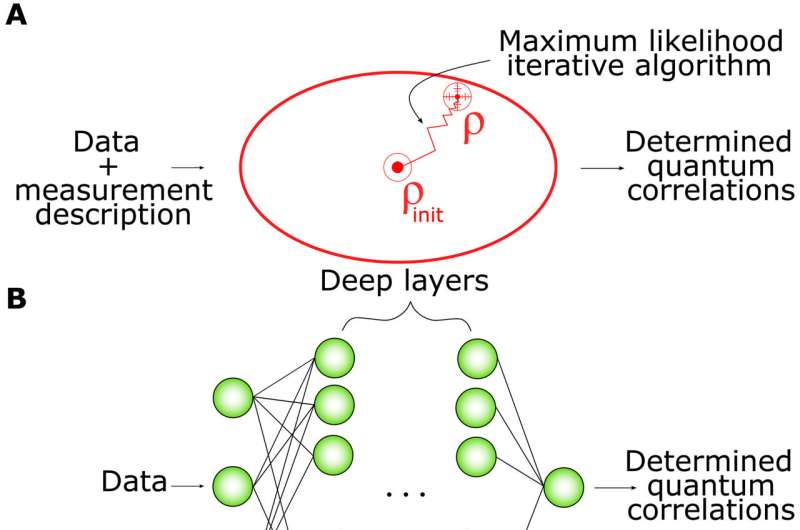August 1, 2023 report
This article has been reviewed according to Science X's editorial process and policies. Editors have highlighted the following attributes while ensuring the content's credibility:
fact-checked
peer-reviewed publication
trusted source
proofread
Using AI to accurately quantify the amount of entanglement in a system

An international team of physicists has found that deep-learning AI technology can accurately quantify the amount of entanglement in a given system—prior research has shown that the degree of "quantumness" of a given system can be described by a single number. In their paper, published in the journal Science Advances, the group describes their technique and how well it worked when tested in a real-world environment.
Over the past several years, as scientists have learned more about entanglement, they have found that in order for it to be useful in applications, designers of such systems need a way to determine the degree of its entanglement. And that presents a problem, of course, because measuring a quantum state destroys it.
To get around this problem, physicists have developed what is described as quantum tomography, where multiple copies of a state are made and each is measured. This technique can ensure 100% accuracy, but it is exhaustive and requires considerable computing power. Another approach involves making educated guesses using limited information about a system's state. This involves a trade-off between precision and resource use. In this new effort, the research team brought a new tool to the problem: deep-learning neural networks.
The team used AI technology to improve on the precision of estimates of the degree of entanglement of a given system, rather than measuring them directly. To that end, the AI app was taught to study entangled quantum states using data generated by another system that provided numerical data. The AI apps then used the resulting data to generate successive estimations of the degree of entanglement, growing more precise with each run.
The researchers tested their approach by training it on a secondary set of data obtained through simulations, and found error rates 10 times lower than those obtained with traditional estimation methods. They then tested it again, this time in a real-world environment. They found the same degree of improvement measured with the simulated data.
More information: Dominik Koutný et al, Deep learning of quantum entanglement from incomplete measurements, Science Advances (2023). DOI: 10.1126/sciadv.add7131
Journal information: Science Advances
© 2023 Science X Network





















